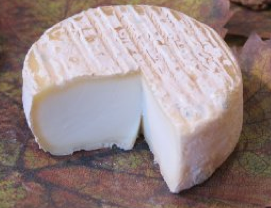Picodon de la Drôme
- Producer
- Various
- Country
- France
- Region
- Rhone Alps, Savoie
- Size
- 1-2 ins diameter, 1 in high
- Weight
- 4oz
- Website
- Milk
- Cow
- Classification
- Semi Soft
- Rennet
- Animal
- Rind
- Mold Ripened

The origins of Picodon de la Drôme date back to the 14th century when it is thought that production of this small cheese began in an area defined by the Drôme and the Ardèche regions of southern France, straddled by the Rhône River. However, Picodon is also produced in the Gard and the Vaucluse regions, with the result that, not surprisingly, there are regional variations.
The name for this little goat's milk cheese derives from the ancient language of the Langue d'Oc, and means "spicy." Milk for production comes from goats that browse the scrubby, drier areas of the lower Rhône, where the flavors of the vegetation tend to be strong.
Production may be industrial or fermier, however, regulations for all these cheeses stipulate that a very small quantity of rennet is used. After coagulation, the curd is hand-ladled into cheese strainers, drained and salted. After being unmolded, cheeses are dried and matured for at least two weeks before being sold.
The interior paste of Picodon is bone-white which, with age, becomes slightly more straw-like in color, with a translucence underneath the rind. The texture is close and dense and moist when young, becoming drier and firmer as the cheese matures.
There are several variations of this cheese that can occur during the maturing process. Some cheeses are allowed to develop naturally, in which case they become coated with blue and white molds. In other versions cheeses are subjected to a process called "Dieulefit," when they are washed and soaked in eau de vie and matured for a month or packed with olive oil and herbs.



